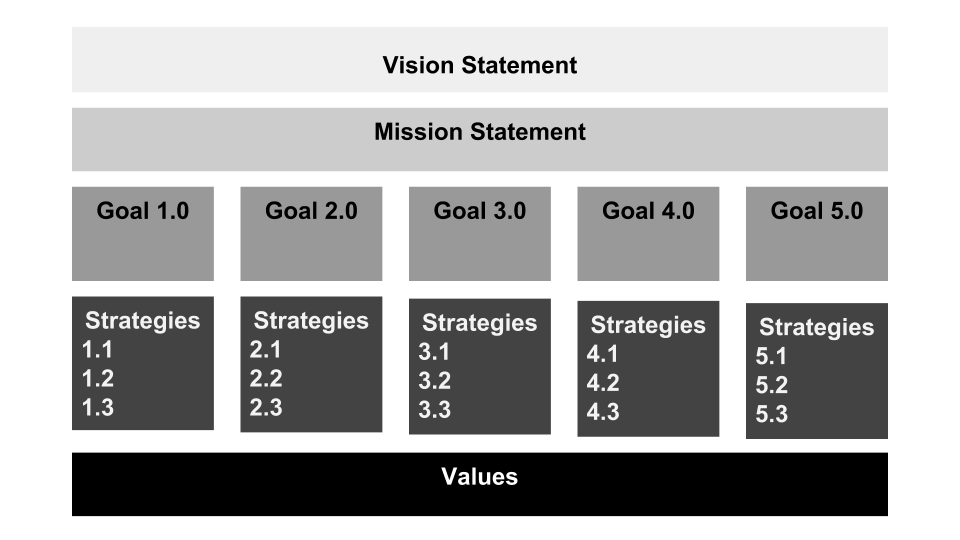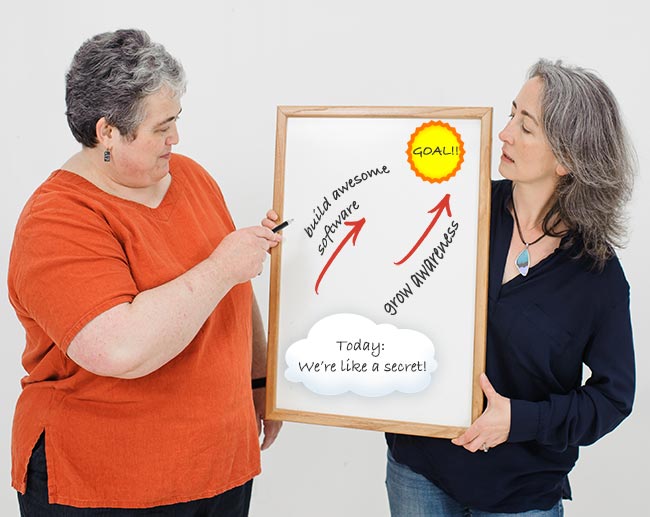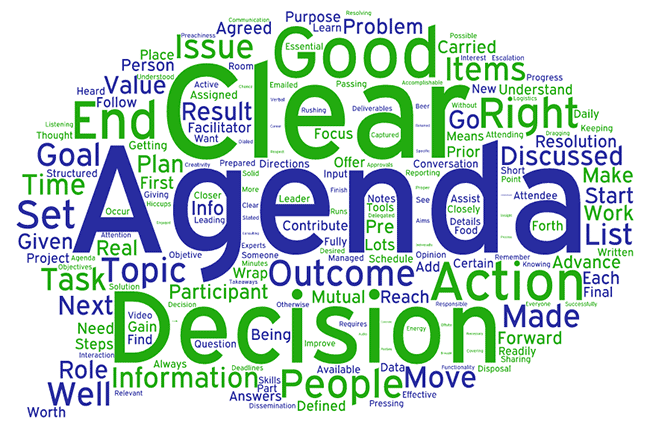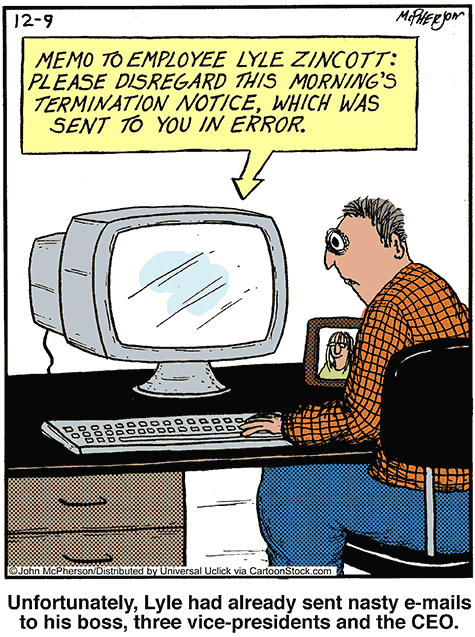An Intro to Strategic Planning with Remote Teams

This post is the first in a series. You can find the whole series in our Complete Toolkit for Strategic Planning with Remote Teams.
Do you need to create a strategic plan, and wonder how to go about the strategic planning process? Concerned whether that process can even work with remote teams?
Meet Anna O’Byrne.
Anna O’Byrne is the founder and Chief Conversion Copywriter at Conversion Copy Co.
When Anna contacted us about a blog post, we starting talking about her unique past experience of leading strategic planning with remote teams.
We decided to explore the topic further by collaborating on a series of meeting templates that a could be used to guide a remote team through the strategic planning process.
Working Together to Bring Strategic Planning Online
Anna, who’s the expert here on strategic planning, outlined a series of meeting agenda templates and instructions for running those meetings. We then set these agendas up in Lucid Meetings, and tested out each process for ourselves, making small adjustments along the way based on our expertise in online meetings. We even ran one of the meetings twice, with Anna facilitating late at night from her Australian outpost.
This blog post is the first in a series about our experience building these strategic planning meeting templates together. The templates themselves are available in the template gallery.
Today’s post provides the context: what the strategic plan looks like, who these templates are for, and the problems unique to online planning they’re designed to solve.
In the following posts, we’ll go over:
- How to prepare for strategic planning.
- The 5 meetings that make up the real-time part of the strategic planning process.
- Online software options that make the brainstorming part of the process easier (think sticky notes on the web).
- Our experience walking through this process with the team at Lucid Meetings.
Along the way, we’re looking for your ideas and feedback. Strategic planning may be old, but planning like this with people all over the world is pretty new, and we definitely don’t have all the answers yet.
Ingredients for the Essential Strategic Plan
There are five parts to this plan, and five templates that run you through how to create them. When you’re done, the entire plan should fit on one or two pages when printed out.

In this plan, you’ll document your:
- Vision
The future as it will look when your strategy succeeds. - Mission
What you do, who you do it for, and the benefit. - Goals
The big things to achieve towards fulfilling the mission. - Strategies
The specific targets that help you measure progress towards each goal. - Values
The beliefs and guiding principles that govern how you’ll go about the work.
This format is short, clear, and easy to read, because the team will want to reference the strategic plan often. Once in place, an organization’s strategic plan should act as a kind of map for everyone involved.
“Our destination? Epic! Marvelous! Keep trekking, because it’s worth it!” says the Vision. “Here’s where we’re headed next,” the goals say. “When you get to the 50% growth-rate milepost, start heading up the referral networking hill.” “No fighting in the back seat, and no throwing trash out the windows along the way!” say the values. “We’re in this together and we’re going to be nice.”

Just like with maps, some strategic plans are better than others.
- If you don’t have a solid idea of what you’re trying to achieve (the destination), then you’ll have people heading off in the wrong direction.
- If you don’t really understand where you’re starting from, you may chart a path that’s impossible for you to follow. Sometimes you can’t get there from here.
- If you don’t describe the steps along the way, you may start out together but quickly become scattered and lost.
The process outlined in this series helps the group create a plan that accurately reflects where they are and a view of where they’re going together. While having a plan is super useful, you may find the process of creating that shared understanding together to be equally as valuable.
Who should use this strategic planning process
This process works really well for a small leadership team like ours, and should fit yours if you’re in a similar situation. What makes this work for us?
 We all have some prior experience with strategic planning, but none of us are experts. Basically, we know just enough to be dangerous, but not enough to be effective without some pointers.
We all have some prior experience with strategic planning, but none of us are experts. Basically, we know just enough to be dangerous, but not enough to be effective without some pointers.
 We’re small, and half our team works remotely. These templates work best with groups of 6 people or fewer. In our case, the planning group included 4 people.
We’re small, and half our team works remotely. These templates work best with groups of 6 people or fewer. In our case, the planning group included 4 people.
 We wanted to do it ourselves quickly; we didn’t want to put off planning until the next company retreat.
We wanted to do it ourselves quickly; we didn’t want to put off planning until the next company retreat.
If your team looks a bit different, you can still use these templates, but you might want to change up a few things.
- If you will be meeting face-to-face, consider combining several sessions into a longer half-day workshop. And sticky notes! You’ll need to learn how to run the brainstorming exercises when everyone sits together.
- If you have no experience with strategic planning, consider hiring a facilitator (more below) or at reading up on the topic beforehand.
Refreshing an existing strategic plan
These templates will also be useful for groups that need to revisit and update an existing strategic plan.
Because each template in the series tackles a separate part of the strategic plan, you can choose to run through just one or two of the sessions independently.
For example, you may decide to refresh the Goals and Strategies part of your plan every 3 to 6 months, but only revisit the Mission and Vision every few years.
The Challenges of Planning with a Remote Team
In most organizations, strategic planning happens as an annual series of intense face-to-face workshops. The group consumes lots of coffee, and has their way with piles of sticky notes and flip charts .
With a remote team, face-to-face is out, and so are flip charts.
All-day sessions are out too. You simply cannot keep people’s focus in an online session for that much time. Since a remote team usually means people in different time zones, you’ll also run into limits on how long you can go before overlapping someone’s dinner. No one does their best planning hungry!
In these templates, we addressed these challenges by:
- Requiring more prep work from participants in advance.
- Keeping the duration of each meeting to 2 hours or less.
- Focusing on individual rather than all-at-once brainstorming (which research shows works better anyway).
- Using a mix of technologies to support sharing ideas and collaborative editing.
- Leaving the final-draft part of writing the plan for after the meeting.
Improve Your Skills with Meeting School
When you should hire a facilitator
It’s always better to work with a facilitator trained in strategic planning.
First, having a dedicated facilitator frees you up to focus on your plan, and not the process. They can keep the energy high, help the introverts participate, and act as a neutral party when debates arise. Facilitators also know lots of ways to make the dreaded word-smithing part of getting your vision and mission right go faster.
So our first recommendation is to always hire a facilitator if you can afford it.
You really need a facilitator when:
- You have more than 5 people, and no one on the team has experience leading strategic planning sessions.
- The team doesn’t work well together. Groups that are antagonistic, or conversely, groups that are too polite, have a really hard time getting a good result on their own.
- The scope is big. You have 10 or more people involved in the process, and your organization operates on a larger scale.
Most facilitators are trained to run in-person workshops, but we’re starting to see more folks like Anna who can lead online planning sessions too.
Next Steps
Have you participated in online strategic planning? What worked well, and what did you learn from that experience?
Are you considering creating your first strategic plan? If so, what questions do you have that Anna and I could answer?
Write to us here in the comments, on Twitter, or Facebook – we look forward to learning more from you as we go.
Ready to dive in? Read other posts in this series, download meeting agendas, and get the meeting templates here.
The next post in this series is: Preparing to Plan



